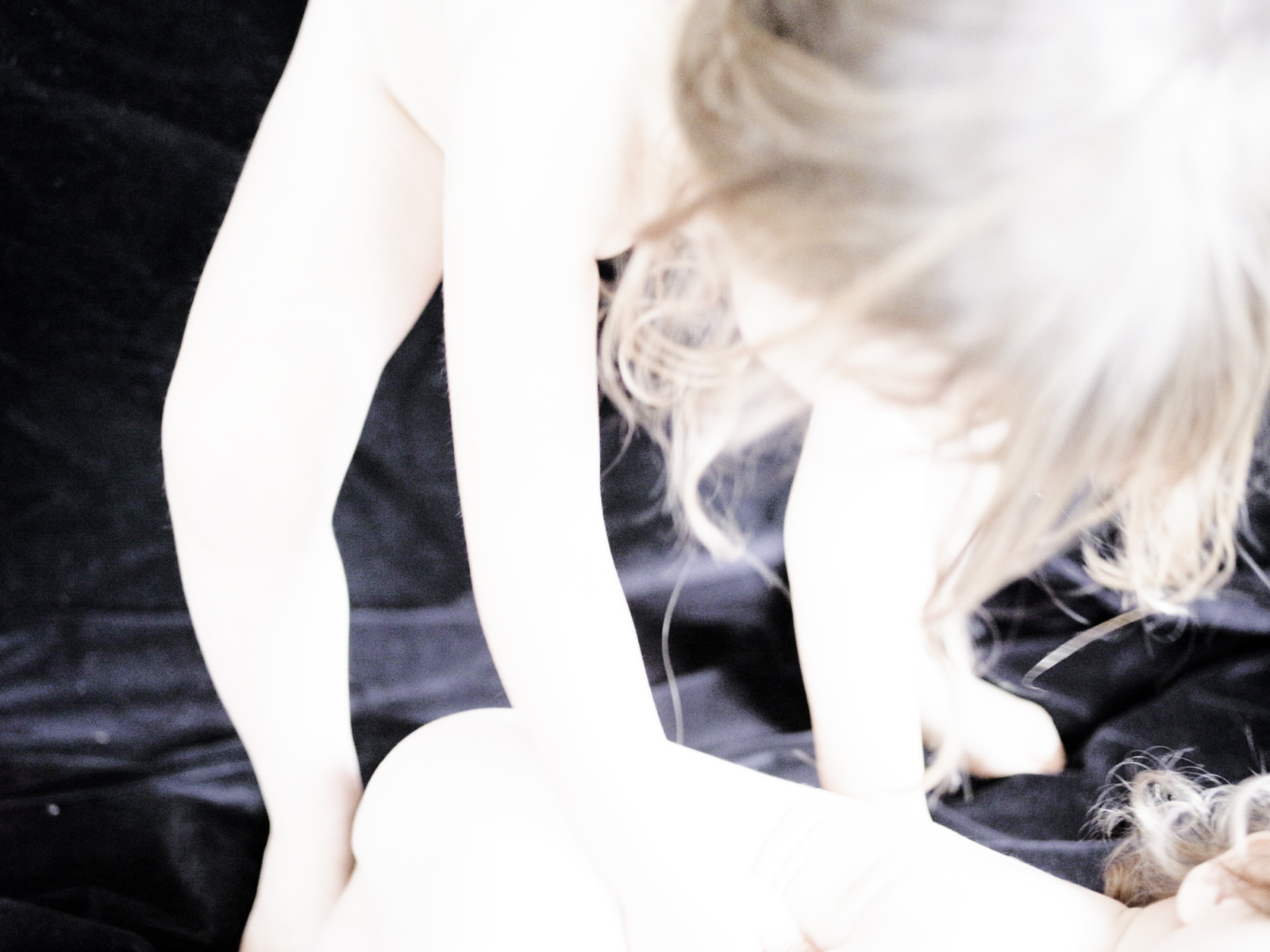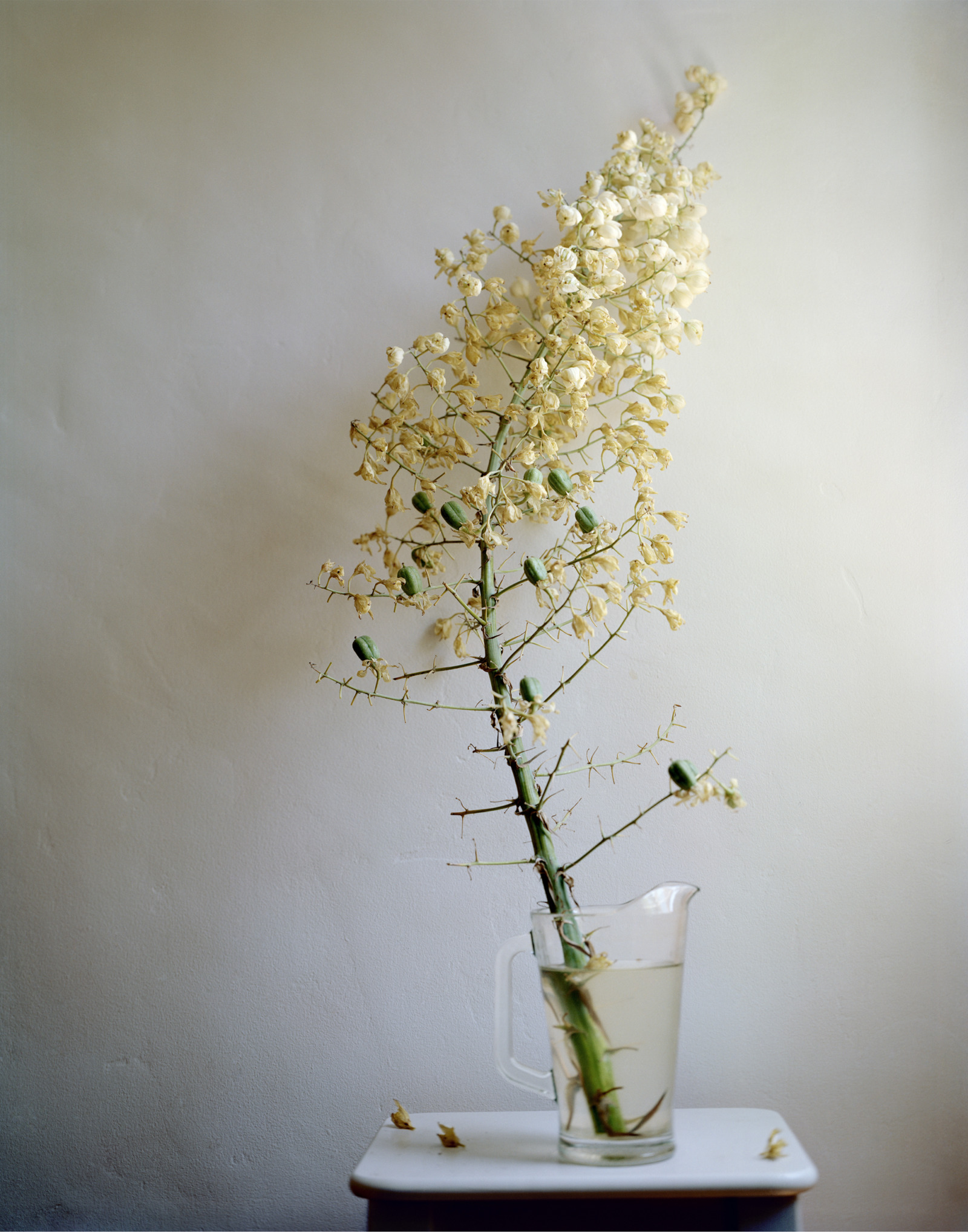Interview – Ahndraya Parlato
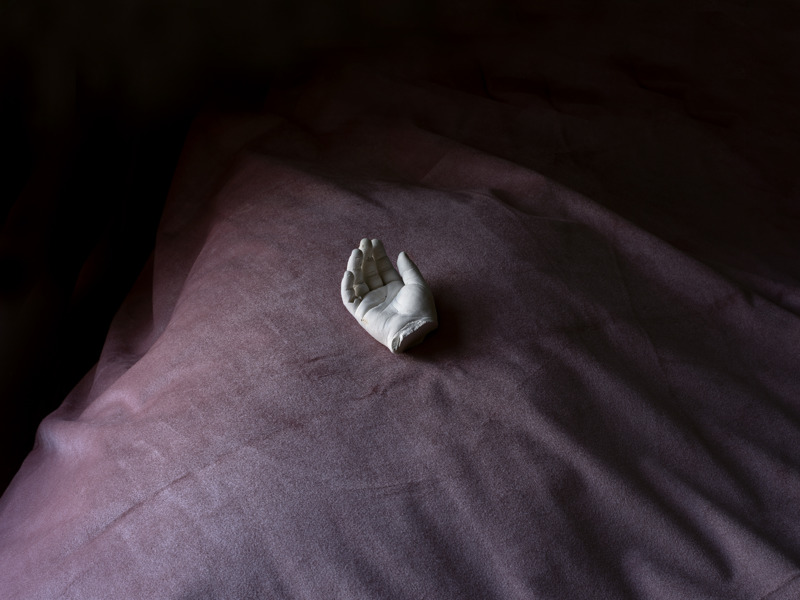
In Who Is Changed and Who Is Dead, Ahndraya Parlato uses the life-changing events of her mother’s suicide and the birth of her children as the genesis for an expansive project exploring the contradictory and complex conditions of motherhood. The resulting image-text book threads the political and historical with the deeply personal, bringing together narratives from across genres and generations to create a nuanced and compelling body of work. Interwoven with her own writings are still lives, sculptures, photograms made from her mother’s ashes, and re-enactments of 19th century ‘hidden mother’ images. Included amongst these are Parlato’s photographs of her children, who are shown with both a fidelity to maternal intimacy and a more distanced contemplation. Within this complexity Parlato strives to find clarity around the essential questions of parenthood, mortality, and gender.
Your first monograph, A Spectacle and Nothing Strange, uses your mother as an influence in a similar vein to Who is Changed and Who is Dead. Have your thoughts on being raised by your mother changed over the time between these two book publications?
More than being about my mom, A Spectacle and Nothing Strange, draws from my experiences of being raised by someone who was mentally ill, and the ways that I was forced, from a young age, to sort out what was really happening and what she was imagining. I’ve given the example of my mom believing that whatever she couldn’t find in our home had been taken by our neighbors and how I remember being six years old and having to decide for myself how likely it was that a neighbor would bother to break into our home and steal something as insignificant as a button. As small children, we generally tend follow our parents lead and so I was in the unique position of wanting to believe my mom, but also sensing that she was an unreliable narrator. I used these experiences to address the idea of reality – the tension between subjective and objective realities and the ways that reality is a socially agreed upon, continually shifting construct, experienced differently by everyone, rather than an objective, finite concept.
I don’t think that my thoughts around how I was raised have changed much since becoming a mother… The one thing I can think of is that my childhood had very few rules or boundaries, yet I was aware of how much my mother loved me. I can’t recall ever having a bedtime; I came and went as I pleased from 11 years old on; and I was open about and received no push-back about things like, experimenting with drugs. Sometimes as a mother myself, I find this freedom unfathomable! And I wonder how my mom was able to give me so much freedom, while still being attentive and caring.
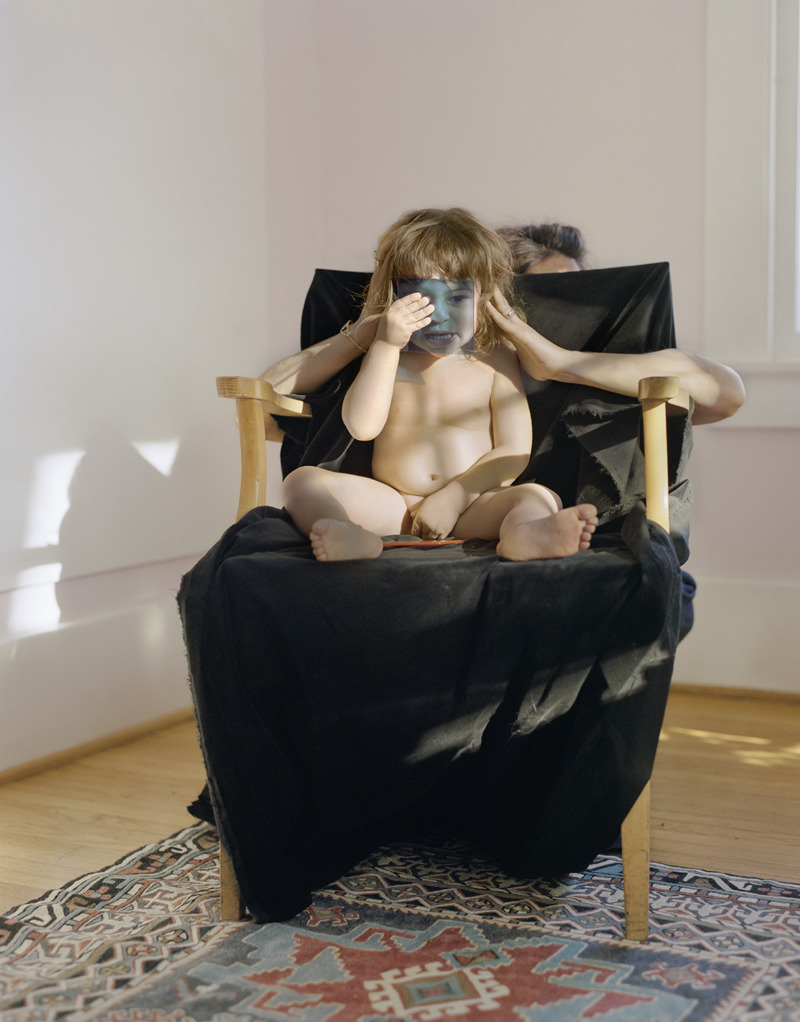
The examples of specific trepidations that you write about from your daughters and your own childhood, such as, the fear of the coyote in the bathroom, of getting a pinky nail cut, and E.T. appearing outside your bathroom door all seem like common childhood fears. As we get older, we tend to forget or even laugh about these highly specific phobias. What drew you to these fleeting fears and what made them become a focal point throughout your book?
It’s not those specific fears that are a focal point in the book, but rather that there is a thematic undercurrent of fear and anxiety running throughout. I use those examples, which are seemingly small or dismissible, to get to the non-lucid aspects of anxiety in general. When one is fearful or anxious, it doesn’t really matter what the source is – the effect is roughly the same, regardless of whether the fear is lucid or non-lucid, probable or not probable. I also wanted to balance the larger fears expressed – of my children dying, being kidnapped, or raped – with a bit of dark humor.
Before becoming a mother, I was unable to connect with any fear of dying
You recently talked about some of your favorite books in an article for MACK. One book, My Own Death, by Peter Nadas, is laid out in a similar style to Who is Changed and Who is Dead. Was this book a big influence on your work? Can you think of any other books or authors that influenced your writing style?
While I love Own Death, it was more of an influence design-wise than it was in terms of writing style. I’ve always loved the way the object of the book has a certain physical gravitas that mimics the content inside and I did think about that when we were designing Who is Changed and Who is Dead. In terms of my ‘style,’ having never actually been trained as a writer, I often joke that I have no style, but rather I write how I speak, which I would describe as direct and forthcoming. At a certain point, I did recognize that my text has an infinity to Larry Sultan’s (a teacher of mine) Pictures From Home, in the way that it is both vulnerable and straightforward.
Who is Changed and Who is Dead uses many visual strategies to convey your ideas. Things such as photograms, still lives of amateur ceramics and fauna, portraiture, and even landscapes. What led you to use such a wide variety of photographic approaches?
Boredom! When I started making this work, I was burned out on photography. Both as a result of the constant stream we’re all subjected too daily, as well as from teaching. I was particularly frustrated by a type of photography that I characterize as technically proficient and in dialogue with contemporary photography, but which lacks any unique way of seeing or contextualizing the world. This boredom forced me to justify my own desires to engage with and add to the stream. One solution that I came up with was using multiple visual strategies and text. I gave myself the challenge of how many different visual strategies I could use, but that would still ultimately coalesce. For this work, which essentially asks a stream of unanswerable questions, having multiple threads also felt like a way of getting at the complexity of the content itself.
I think of it as a juggling act – how many balls can be up in the air before they crash down? And, if they do crash down, is there a moment beforehand, when for one, lovely second things make slightly more sense than usual?
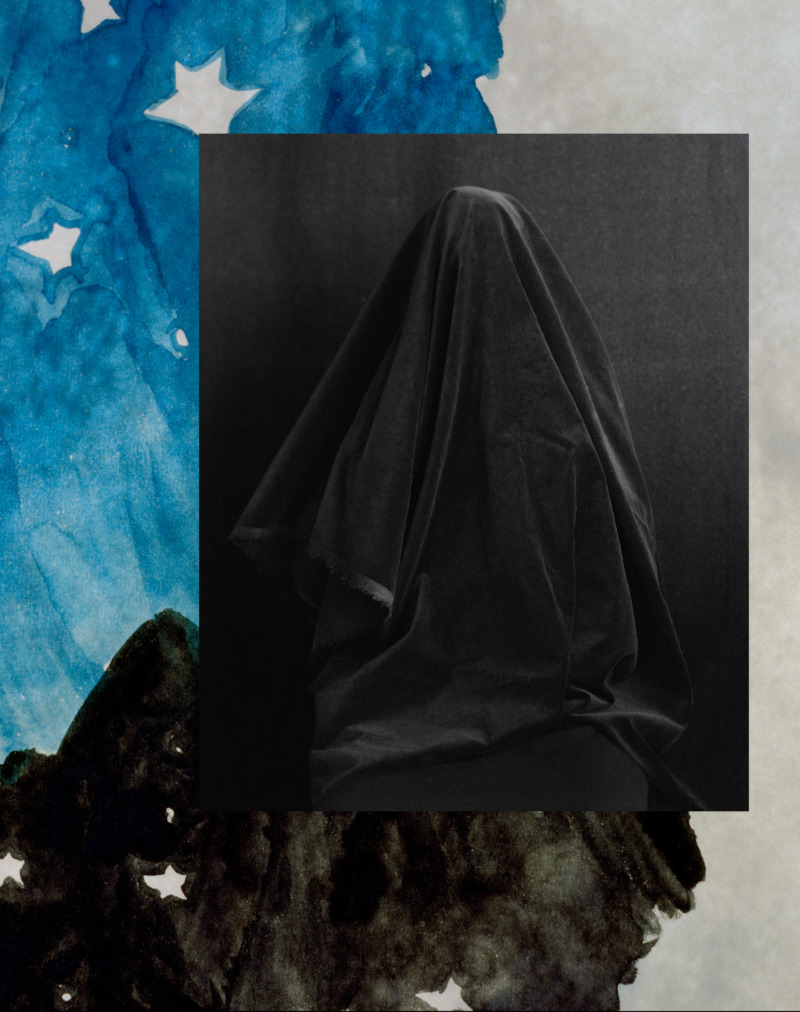
The writing that is in tandem with your own personal relationship to motherhood is extremely vulnerable but also relatable. Was it your goal to convey your own personal relationship and thoughts of motherhood; were you trying to relate to all mothers, or both?
You give me too much credit. I don’t think I had a global strategy other than to be honest to my own experiences. And while my experiences will certainly be similar to those of other mothers, I would never claim universality. I did choose to use the words, daughter, mother, grandmother, and you because I think they create a larger point of entry, rather than, say, always using my family members’ specific names.
Death is an apparent theme throughout the book and is conveyed in many different forms. It’s something you want to avoid, something that you confront in a personal way, something that you express superstitious tendencies towards, something you fear, and something you meet with a certain degree of confidence. After the completion of this project did your outlook on death change, stay the same, or morph into something new?
My changed outlook on death, specifically to my own mortality, was a driving force in the origins of this project. Before becoming a mother, I was unable to connect with any fear of dying. When I thought about it, death seemed like an inevitable fact of life and as the person who wouldn’t be here any more, it didn’t seem like something that would much affect me or was worth fearing. After having children, my feelings completely shifted. I’m so curious about the people they’ll grow up to become, that the idea of dying before having that opportunity, is an incredibly painful thought. This new stance, coupled with the simple fact that parenting infants is essentially all about keeping them alive, made death a much more active and fearful presence in my life.
Despite the vulnerability of my writing, I always had an audience in mind.
You quote a number of sources that you used throughout the book. A medical journal, poems, and songs. In your process, do you look to these different forms of art and text as inspiration for your images or did you look for more specific types of writing and art to pair with already established ideas?
I wasn’t specifically looking to include other pieces in my piece. I am an avid reader with a range of interests, and inside my head is sort of a cacophony of literary influences and fragments. Most of the sources I cite are fragments that were stuck in my head for a long time. I particularly enjoy analyzing why something might be on repeat or how it might inadvertently dovetail to another thread in the book. For instance, growing up, there was a certain point where I basically decided that most of what my mom told me about her past was conjecture; but then there would be a handful of moments when, say, someone who had figured into several of her stories, but I assumed she never actually knew, would call and leave a message. And so, the Nirvana lyric (via Catch-22) – “just because you’re paranoid don’t mean they’re not after you” – always makes me think of her. But it also strikes a chord in relation to some of the ideas around parental anxiety I was sussing out.
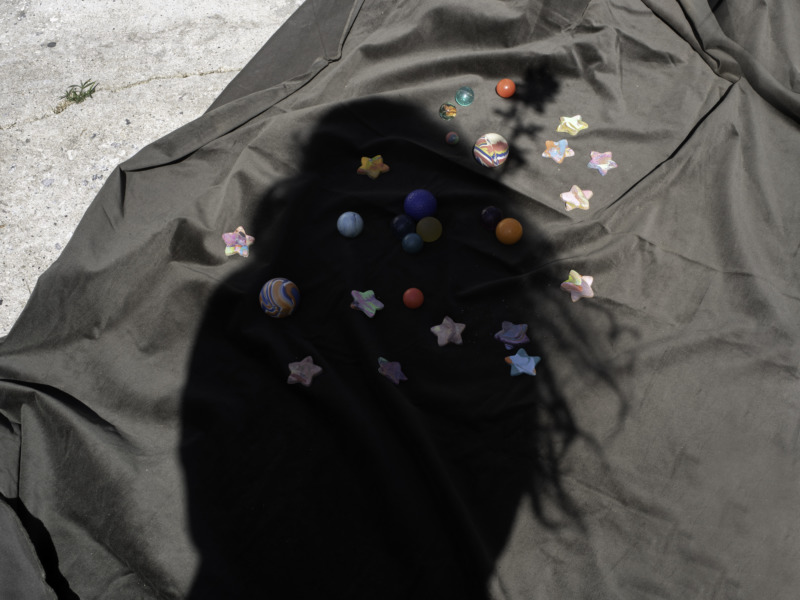
Your children are at an age where they rely on you a lot. Do you think the outcome of this project would have been different if you were recalling their childhood and not currently living through it? Do you think the images and text throughout the book would have been different if it was more geared to your children’s teenage years? Would your fears as a mother be different?
Yes! If the text had been written when my children were older, I imagine that the fears and anxieties expressed would have less poignancy considering that we tend to view the past in kinder terms once we’re past it. The images would most likely have had to shift as well. As young children, the sexuality that is unfortunately projected onto all naked female bodies has a theoretical quality to it now. However, if my children were teenagers, that sexuality would no longer remain theoretical, as the space for sexualized female teenage bodies is already quite existent, and prevalent in society.
Do you feel that Who is Changed and Who is Dead is a diary or record of your experiences as a mother written to your children? Do you look forward to watching them form and unearth new ideas about the book itself as they grow older?
No, diaries are written for oneself. Despite the vulnerability of my writing, I always had an audience in mind.
I’m not sure ‘look forward’ is the proper phrasing, though I am curious what they’ll think about it, particularly if they decide to become mothers themselves.

